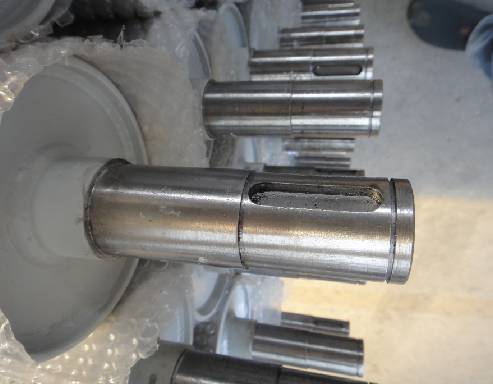 Afrikaans
Afrikaans  Albanian
Albanian  Amharic
Amharic  Arabic
Arabic  Armenian
Armenian  Azerbaijani
Azerbaijani  Basque
Basque  Belarusian
Belarusian  Bengali
Bengali  Bosnian
Bosnian  Bulgarian
Bulgarian  Catalan
Catalan  Cebuano
Cebuano  Corsican
Corsican  Croatian
Croatian  Czech
Czech  Danish
Danish  Dutch
Dutch  English
English  Esperanto
Esperanto  Estonian
Estonian  Finnish
Finnish  French
French  Frisian
Frisian  Galician
Galician  Georgian
Georgian  German
German  Greek
Greek  Gujarati
Gujarati  Haitian Creole
Haitian Creole  hausa
hausa  hawaiian
hawaiian  Hebrew
Hebrew  Hindi
Hindi  Miao
Miao  Hungarian
Hungarian  Icelandic
Icelandic  igbo
igbo  Indonesian
Indonesian  irish
irish  Italian
Italian  Japanese
Japanese  Javanese
Javanese  Kannada
Kannada  kazakh
kazakh  Khmer
Khmer  Rwandese
Rwandese  Korean
Korean  Kurdish
Kurdish  Kyrgyz
Kyrgyz  Lao
Lao  Latin
Latin  Latvian
Latvian  Lithuanian
Lithuanian  Luxembourgish
Luxembourgish  Macedonian
Macedonian  Malgashi
Malgashi  Malay
Malay  Malayalam
Malayalam  Maltese
Maltese  Maori
Maori  Marathi
Marathi  Mongolian
Mongolian  Myanmar
Myanmar  Nepali
Nepali  Norwegian
Norwegian  Norwegian
Norwegian  Occitan
Occitan  Pashto
Pashto  Persian
Persian  Polish
Polish  Portuguese
Portuguese  Punjabi
Punjabi  Romanian
Romanian  Russian
Russian  Samoan
Samoan  Scottish Gaelic
Scottish Gaelic  Serbian
Serbian  Sesotho
Sesotho  Shona
Shona  Sindhi
Sindhi  Sinhala
Sinhala  Slovak
Slovak  Slovenian
Slovenian  Somali
Somali  Spanish
Spanish  Sundanese
Sundanese  Swahili
Swahili  Swedish
Swedish  Tagalog
Tagalog  Tajik
Tajik  Tamil
Tamil  Tatar
Tatar  Telugu
Telugu  Thai
Thai  Turkish
Turkish  Turkmen
Turkmen  Ukrainian
Ukrainian  Urdu
Urdu  Uighur
Uighur  Uzbek
Uzbek  Vietnamese
Vietnamese  Welsh
Welsh  Bantu
Bantu  Yiddish
Yiddish  Yoruba
Yoruba  Zulu
Zulu conveyor pulley lagging material
The Importance of Conveyor Pulley Lagging Material
Conveyor systems are fundamental to many industries, including mining, manufacturing, and logistics. Central to the efficiency of these systems are conveyor pulleys, which are critical components that deliver power and control the movement of conveyor belts. A key aspect of pulley performance is the lagging material applied to the surface of the pulley. This article explores the significance of conveyor pulley lagging material, its types, benefits, and best practices for effective use.
Understanding Conveyor Pulley Lagging
Lagging refers to the process of covering the surface of the pulley with specialized materials to enhance grip, reduce wear, and extend the life of the conveyor system. Pulleys that are properly lagged can improve the system's overall efficiency, minimize slippage, and reduce the risk of belt misalignment.
Types of Lagging Materials
There are several types of lagging materials used for conveyor pulleys, each with its specific advantages
1. Rubber Lagging This is the most common type of lagging material. It offers excellent friction properties and is highly resistant to wear and tear. Rubber lagging comes in various thicknesses and surface patterns, making it versatile for different applications and environmental conditions.
2. Ceramic Lagging Designed for high-demand applications, ceramic lagging provides superior grip and extreme wear resistance. It is often used in industries where there is a high likelihood of material abrasion, such as mining and heavy materials handling.
3. Steel Lagging While less common, steel lagging can be applied in applications that require high resistance to heat and chemical exposure. Steel lagging is suitable for specific conveyor belts operating in extreme conditions.
4. Polyurethane Lagging This type of lagging material is flexible and resistant to oils and chemicals, making it suitable for many industrial applications. Its durability and low friction characteristics contribute to prolonging the life of the conveyor belt.
Benefits of Proper Lagging
The right lagging material can provide numerous benefits
conveyor pulley lagging material

- Increased Traction Effective lagging improves the grip between the pulley and the conveyor belt, reducing slippage and enhancing operational efficiency
.- Extended Equipment Life By reducing wear on both the pulley and the belt, lagged pulleys can significantly extend the lifespan of the conveyor system.
- Reduced Maintenance Costs With less wear and tear, the need for frequent maintenance and replacement is minimized, leading to lower operational costs.
- Improved Safety Enhanced traction and reduced slippage contribute to safer operations, particularly in challenging industrial environments.
Best Practices for Lagging Installation and Maintenance
To maximize the benefits of conveyor pulley lagging, it's crucial to follow best practices during installation and maintenance
1. Correct Material Selection Choose lagging material that matches the operational environment and specific application requirements. Consider factors such as load capacity, belt speed, and ambient conditions.
2. Professional Installation Proper installation is vital to ensure that the lagging adheres well to the pulley surface. Engaging experienced professionals can prevent issues related to misalignment and premature wear.
3. Regular Inspection Periodic inspections of the lagged pulley can help identify signs of wear or damage early on, allowing for timely maintenance or replacement to avoid costly downtime.
4. Proper Alignment Ensuring that the pulley is correctly aligned with the conveyor belt is essential. Misaligned components can lead to uneven wear and decrease the lifespan of both the lagging and the conveyor system.
In conclusion, conveyor pulley lagging material plays a pivotal role in enhancing the performance and durability of conveyor systems. By understanding the types of lagging materials available and adhering to best practices, companies can significantly improve efficiency, reduce costs, and ensure safer operations within their facilities. As industries continue to evolve, the importance of effective conveyor management will only grow, underscoring the need for quality lagging solutions.
-
Trusted Conveyor Solutions from Leading Conveyor Idler Roller ManufacturersNewsJun.27,2025
-
Reliable Return Idler Solutions for Efficient Belt Conveyor SystemsNewsJun.27,2025
-
Precision Conveyor Accessories for Streamlined Material HandlingNewsJun.27,2025
-
High-Quality Belt Conveyor Idler Solutions for Efficient Material HandlingNewsJun.27,2025
-
High-Performance Belt Conveyor Pulleys for Reliable Material HandlingNewsJun.27,2025
-
Enhancing Material Handling EfficiencyNewsJun.27,2025





























